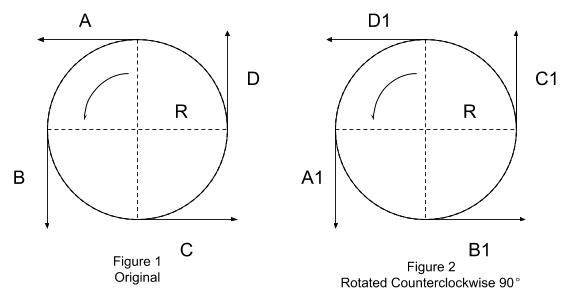Chinese Class
Our movements must have a horizontal one and a vertical one intersecting/interacting at the same time.
Three parallel planes
- Top plane at the shoulder (including extending the arms)
- Middle plane at the waist
- Bottom plane at the knees
The integrity of each plane must be maintained. There is a vertical rod that goes through the middle to connect all three planes to fix them in a particular way, but yet they are free to move any other way. Each plane is like a trampoline. This is how we convert opponent's incoming kinetic energy into potential energy stored in the trampoline, and eventually back to kinetic energy aimed at the opponent. You can also lock any of the planes, and move a different one to create a vertical stretch. With these 3 planes, you can create a lot of variations and configurations.
For the top plane, it can expand by the hand going out, and can contract by the elbow coming in. The top plane can become tilted indirectly because the middle and bottom planes actively change their orientation, and the top plane is tied to them, e.g. your arms are tied to the kuas, it's the kua that goes down, and not the arm directly.
Note that out-with-hand is not about moving the hand, it is using rear-end power to drive the hand out on a line (or in other words, inside a tube).
Rhythm is clear in the yilu when you can do movements one by one.
The movements are clear when you can separate yin and yang, e.g. elbow-in vs hand-out.
Red Fist 红拳 vs Forearm Fist 肱拳 as in Punch covering hand 掩手肱拳: Red fist is called as such because your punch should cause blood to be spilled.
The most important secret is something that even the teacher is unable to do.
Traditionally, a teacher does not tell you the requirements, but only shows you the move. If he tells you the requirement, you can then tell that he can't do them either.
The real gongfu is never wrong in the most basic things.
Cross Hands
- Lock the hands, push the shoulders and kuas down to bring the elbows to the cross hands position.
English Class
Rub Right Foot
- Don't move the elbow or hand, just rotate the kua.
- Forearm only rotates longitudinally
- Waist turns to the right
- Knees go down to cause the arm to go down (Think of the 3 planes above).
Kick with left foot
- Maintain the central vertical rod
- Both fists need to open from inside to outside.
Fist Protecting Heart- Don't involve the central vertical axis
- Use the lower body up and down and horizontal turn to drive the fist down
When we try to change one particular body part, all other parts must be adjusted/changed to allow that initial change to happen.
Every move must be indirect. (Symtom: No, I didn't do it, it's something else that does it. "Always in denial")
No one remembers the strikes in the form, people only care about the dance now.
Being smooth is a symtom of having no separation of yin and yang.
Think about how to put an Ikea table together:
- Open the box
- Sort out the pieces
- Follow the instructions to put the table together
This is a procedure that we must follow, but others just open the box, throws the pieces out all over the place, and try to put the table together in however they see fit.
There is no table unless we follow the procedure.
When you can switch dimensions, the opponent will think that you are not here.
Master Chen Zhonghua mentioned the following squaring effect for every split:
No Split: 1
Split in 1 dimension: (1)^2 = 2
Split in 2 dimensions: (2)^2 = 4
Split in 3 dimensions: (4)^2 = 16
Split in 4 dimensions: (16)^2 = 256
When Master Chen wanted to add one row of tiles to each side of the taiji square at Daqingshan, the following illustrates the number of additional tiles needed.
Size (Addtitional Tiles)
1x1 = 1^2 = 1 (1)
2x2 = 2^2 = 4 (3)
3x3 = 3^2 = 9 (5)
4x4 = 4^2 = 16 (7)
5x5 = 5^2 = 25 (9)
The following illustrate how the volume changes by adding one unit in each of the three dimensions:
1^3 = 1
2^3 = 8
3^3 = 27
4^3 = 64
5^3 = 125





